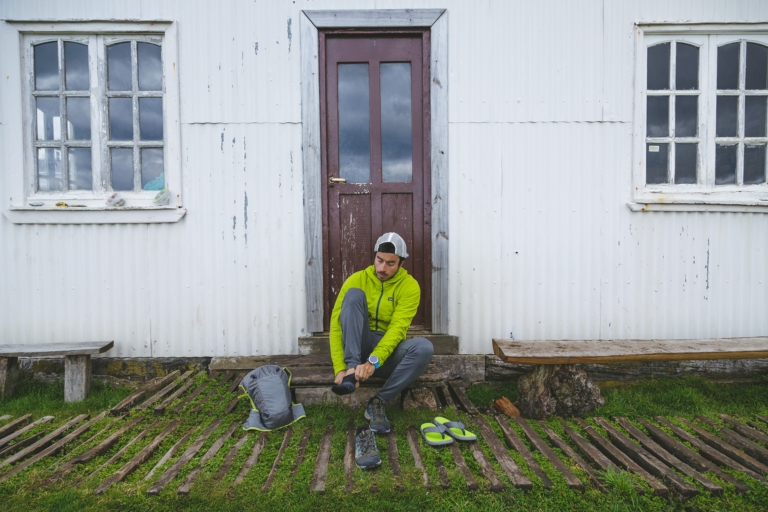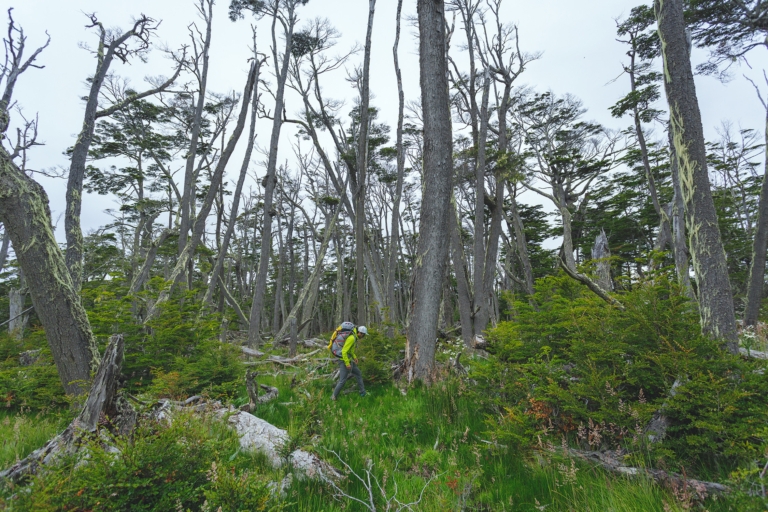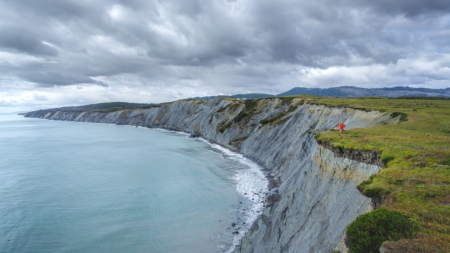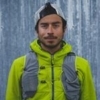Running to the Bottom of the World
Exploring South America’s public lands on foot.
Patagonia is a geographic area located on the southern end of the American continent and shared politically between Chile and Argentina with the Andes Mountains serving as a natural border. The region is well-known, but extremly wild, and conservation has played an important role. It’s also the primary reason we decided to take a trip to explore the “bottom of the world,” mostly on foot.
Last February, my girlfriend and I drove from Santiago toward southern Chile, with a plan to run through some of the wildest places on Earth. Our first stop after a long road trip down the continent and across the Straits of Magellan was Karukinka Natural Park (“last land of men” in the native language) on the island of Tierra del Fuego. It’s a private park, part of the Wildlife Conservation Society, which is an outdoor laboratory in this southernmost end of the continent. Preserving the different ecosystems of Tierra del Fuego is an essential goal of the organization, and we were impressed with their vocation and energy.
One of my favorite things about running in Patagonia was moving through the forest. The ground offers so much cushion it almost feels like running on carpet. The guanacos were very curious every time we went through a group of them. The sunset at this latitude was unlike anything we’d ever seen, and the skies at night seemed so close you’d think you could touch the stars.

Our next stop was Yendegaia National Park, located in the heart of the Cordillera de Darwin. To understand this place, it’s important to know a few pieces of southern Chile’s conservation history. Livestock and cattle ranching has long been one of the dominant industries in Patagonia. It was also an activity that encouraged one of the biggest genocides in the history of the continent and exterminated the First Nations who lived in this area. Scars of this industry are still evident all over Patagonia. Eventually these lands were sold and bought by organizations that saw an opportunity to restore and protect these places. The Conservation Land Trust purchased Yendegaia, and in 2014 donated it to the Chilean government, which declared the area a national park. Today the park is declared but not developed; there’s no infrastructure, so it remains mostly wild.
But here’s where things get interesting. The Chilean government is now building a road with the army, who is in charge of opening a path across the land. This road will allow connectivity to the country and access to the park, but it will also change this place forever. As the army works in the area with explosives and big machinery, they’ve denied public access, which could have ended our journey. But I believe in order to achieve goals and do something you feel very passionate about, you need to step up and take risks. We had a low likelihood of getting caught, so we gave it a shot and came up with a plan to sneak in and access the park, allowing us to get deeper in the mountains to experience this magnificent place.

I’ve been in really remote areas before, but this time, the experience was different. It was utterly wild and exceeded all expectations.
From there we drove to Ushuaia, known as the southernmost city in the world. We stayed with friends whom I met in a race a few months before. Fede and Facu were waiting for us and, as good trail running hosts, they had plans laid out for us. We went deep in the mountains and followed high-ridge traverses, passing by glaciers, tundra, rivers and forests along the way.
We also learned about a place called Península Mitre, which we knew little about except that it’s the corner of the island that extends toward the Atlantic Ocean. When you look at it on the map it looks like the actual “end of the end.” It’s also one of the last truly wild places in Argentina, a country similar to Chile where extraction of natural resources is an ongoing pressure. Península Mitre has also played an important role for wildlife. Many different species migrate here every summer as it’s rich in resources from the ocean. Locals have pushed the Argentine Parliament to protect Península Mitre, and many non-profit organizations, scientists, tourism and guiding organizations, conservationists along with some politicians have joined forces to take action. They want to regulate the use of these public lands and ultimately push for declaring it an official protected area in the province. This fight has been going on for 30 years without any concrete actions taken by the government.

All of this was reason enough for us to check it out. We got in touch with Adolfo, one of the main activists in Ushuaia, who’s spent more than 20 years guiding people in Península Mitre. He was taking a group of scientists on horseback to study a colony of sea lions on the coast of the peninsula and kindly offered to take us there. We were able to run and meet them at the end of each day. Spending time with them gave us an interesting perspective on the area’s history, what makes it so unique and the continued threats to its protection.
Península Mitre is a wild and indomitable place, but also heavily impacted by humans’ actions. The traces left by the livestock industry are still very fresh and contrast deeply with a place that is so magnificent. This is a corner of the world where nature rules everything. The wind, the tides, the rain and snow, and the lack of fresh water forces flexibility and learning how to live comfortably in this harsh environment that offers such high rewards. Running here is one of the most special opportunities I’ve had in my life.
At this point we’d been on the road for over seven weeks. Navarino Island, just across the channel and the site of the southernmost trail in the world, was our last destination. It seemed doable but when the port closed for two days due to extreme winds, we weren’t sure we would get there. Then the gods decided to give us a chance. Packed and ready for the last two days, we got the phone call saying the navy was green-lighting boats, so we grabbed everything and went to the port.

With the weather forecast and the little time we had left, it didn’t look like we would be able to do all that we wanted. So we had to be strategic. The first day we hiked in as far as we could and set up camp in one of the most special places I’ve ever been. We could see Cape Horn from camp. Beyond that piece of land in the distance lies nothing else—all the way to Antarctica.
The next day we put on our running shoes and started toward Monte Bettinelli peak, and from there to Lake Windhond. It’s the farthest south you can run on the southernmost trail in the world. The next day, we woke up tired to snow falling gently.
Running on trails is a different way to connect with places and the people who live there. The more we learn from the natural world, the more likely we are to get involved and respect it. We were glad to see the many efforts to protect these places at the bottom of the world—for the species who live there, for future generations and for us. If we could all understand that conservation isn’t just intended to protect a beautiful place, but rather it’s a tool we have to protect our planet, then I think we would all place more value on its importance. Running trails is a great place to start.

